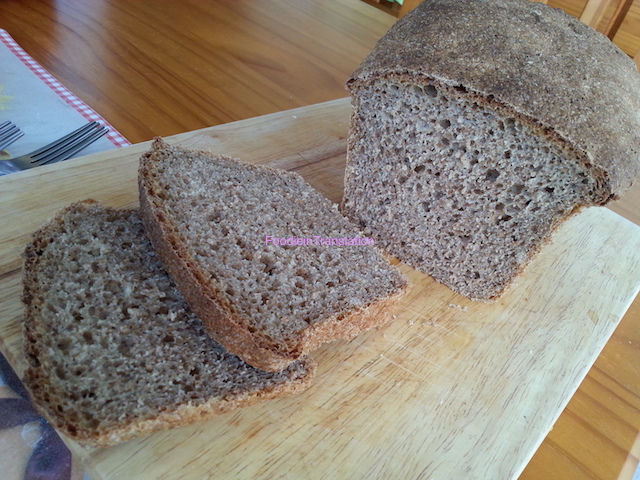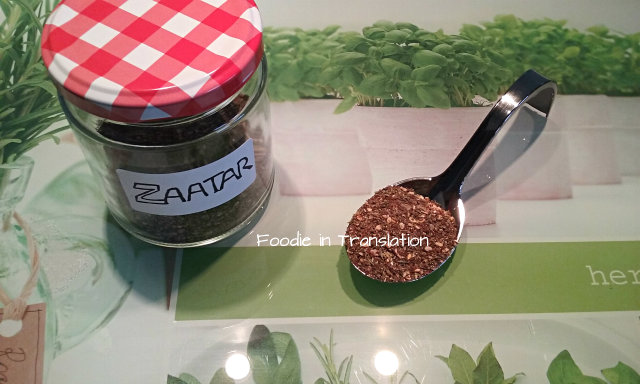Impossibile resistere!! 😂
Impossible to resist!! 😂
Impossibile resistere!! 😂
Impossible to resist!! 😂
 |
| La Rubrica del Venerdì: Mana'ich - Friday's Page: Mana'ich |
E dopo averlo preparato, cosa ci facciamo con lo zaatar (trovate la ricetta qui: La Rubrica del Venerdì: Zaatar)?
Beh, la cosa più semplice da fare è usarlo come condimento per un antipasto molto sfizioso, a metà strada tra un pane, lo chiamano così, e una pizza.
Appena l'ho visto mi son detta che non potevo certo restare indifferente... e quindi bando alle ciance e mettiamoci ad impastare!! 😊
Beh, la cosa più semplice da fare è usarlo come condimento per un antipasto molto sfizioso, a metà strada tra un pane, lo chiamano così, e una pizza.
Appena l'ho visto mi son detta che non potevo certo restare indifferente... e quindi bando alle ciance e mettiamoci ad impastare!! 😊
Mana'ich - Pane allo zaatar
Ingredienti per il pane
160g farina integrale
140g farina di farro
100ml di latte
90ml di acqua
4g lievito di birra secco
7g di sale
Ingredienti per il condimento
2 cucchiai di zaatar
2 cucchiai di olio evo
Ingredienti per il pane
160g farina integrale
140g farina di farro
100ml di latte
90ml di acqua
4g lievito di birra secco
7g di sale
Ingredienti per il condimento
2 cucchiai di zaatar
2 cucchiai di olio evo
And now, after preparing the zaatar, how can you use it (you can find the recipe here: Friday's Page: Zaatar)?
The simplest way is using it as seasoning for a tasty starter, which is a popular Levantine food, halfway between bread and pizza.
As soon as I saw this recipe I knew I couldn't get out of doing it... so, let's not waste anymore time and start kneading!!
The simplest way is using it as seasoning for a tasty starter, which is a popular Levantine food, halfway between bread and pizza.
As soon as I saw this recipe I knew I couldn't get out of doing it... so, let's not waste anymore time and start kneading!!
Mana'ich - Zaatan bread
Ingredients for the bread
160g whole-wheat flour
140g spelt flour
100ml milk
90ml water
4g dry yeast
7g salt
Ingredients for the seasoning
2 tablespoon of zaatar
2 tablespoon of extra-virgin olive oil
Ingredients for the bread
160g whole-wheat flour
140g spelt flour
100ml milk
90ml water
4g dry yeast
7g salt
Ingredients for the seasoning
2 tablespoon of zaatar
2 tablespoon of extra-virgin olive oil
In una ciotola mescoliamo le farine, il latte, l'acqua, il lievito e il sale.
Mix flours, milk, water, dry yeast and salt in a bowl.
Quando l'impasto sarà ben amalgamato e liscio,
Once the dough is well combined and smooth,
mettiamolo a riposare per un paio d'ore finché non avrà raddoppiato il volume.
Dopodiché dividiamolo in 4 parti e lasciamolo riposare una mezz'oretta.
Dopodiché dividiamolo in 4 parti e lasciamolo riposare una mezz'oretta.
let it rise for a couple of hour or until it is doubled in size.
Then divide it in 4 pieces and let it rest for half an hour.
Then divide it in 4 pieces and let it rest for half an hour.
Accendiamo il forno a 220°C, stendiamo l'impasto,
Preheat the oven at 220°C, roll out the dough,
prepariamo il condimento mescolando olio e zaatar
prepare the seasoning mixing olive oil and zaatar
e spalmiamolo sopra il pane.
and spread it on top of bread.
Inforniamo e cuociamo per circa 10 minuti.
Sforniamo e portiamo in tavola!
Buonissimo!! 😋
Sforniamo e portiamo in tavola!
Buonissimo!! 😋
Put it into the oven and bake it for about 10 minutes.
Remove from the oven and serve it!
Delicious!! 😋
Remove from the oven and serve it!
Delicious!! 😋
Enjoy your bread!!








































